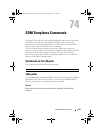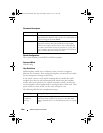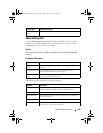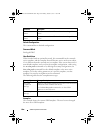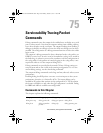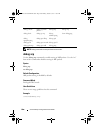
Serviceability Tracing Packet Commands 1485
75
Serviceability Tracing Packet
Commands
Debug commands cause the output of the enabled trace to display on a serial
port or telnet console. Note that the output resulting from enabling a debug
trace always displays on the serial port. The output resulting from enabling a
debug trace displays on all login sessions for which any debug trace has been
enabled. The configuration of a debug command remains in effect the whole
login session.
The output of a debug command is always submitted to the syslog utility at a
DEBUG severity level. As such, it can be forwarded to a syslog server, stored in
the buffer log, or otherwise processed in accordance with the configuration of
the syslog utility. Configuration of console logging in the syslog utility is not
required in order to view the output of debug traces.
Debug commands are provided in the normal CLI tree. Debug settings are
not persistent and are not visible in the running configuration. To view the
current debug settings, use the show debug command.
The output of debug commands can be large and may adversely affect system
performance.
Enabling debug for all IP packets can cause a serious impact on the system
performance; therefore, it is limited by ACLs. This means debug can be
enabled for IP packets that conform to the configured ACL. This also limits
the feature availability to only when the QoS component is available. Debug
for VRRP and ARP are available on routing builds.
Commands in this Chapter
This chapter explains the following commands:
debug arp debug ip igmp debug ipv6 pimdm debug rip
debug auto-voip debug ip mcache debug ipv6 pimsm debug sflow
debug clear debug ip pimdm
packet
debug isdp debug spanning-tree
2CSPC4.XCT-SWUM2XX1.book Page 1485 Monday, October 3, 2011 11:05 AM





